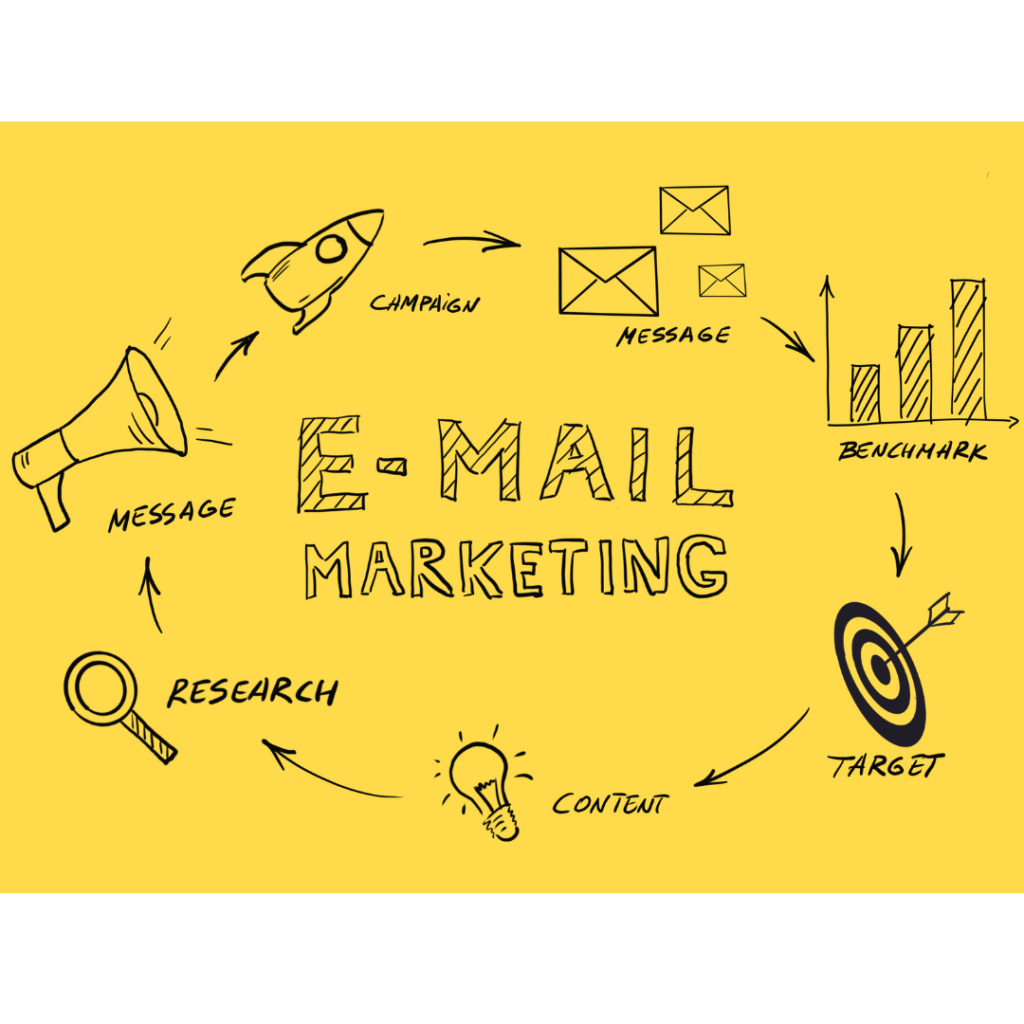Have you ever sent an email where you misspelled your company’s name, forgot to add essential links, or the merge fields simply weren’t working as expected? At times, such mistakes can put you in inconvenient situations, if not downright embarrassing ones. However, any easy way to remedy them is by turning to an email marketing checklist.
Various email marketing pros rely on checklists to decrease stress, increase job effectiveness, and streamline their work process. To save you the hassle, we’ve prepared this 7-point email marketing checklist. Sticking to this will help you launch high-performing email marketing campaigns and stay on top of them with ease.
The Changing Landscape of Digital Marketing
Digital marketing has changed significantly in recent years. With the increasing amount of digital content available, businesses must adapt to stay relevant. Marketers now utilize various channels such as social media, search engines, and email to reach their audiences.
Despite the emergence of other channels, email marketing remains a critical component of any digital marketing strategy. In fact, a Hubspot survey found that 78% of marketers experienced increased email engagement in the past year.
Today, email marketing has evolved to deliver personalized content that resonates with specific audiences. It’s all about sending the right message to the right person at the right time. By leveraging data and analytics, businesses can create targeted campaigns tailored to the recipient’s interests and behaviors.
Why Email Marketing Is Relevant Today?

Many say that email marketing is dead in today’s digital landscape. However, the truth is that email marketing is still one of the best ways to connect with your target audience. With billions of people actively using email worldwide, it provides an effective and direct way to reach target audiences. One of its key benefits is its cost-effectiveness, enabling businesses of all sizes to engage with customers without a significant financial burden. Moreover, email marketing allows for personalized and targeted communication, allowing businesses to tailor their messages to specific segments of their audience. This personalized approach increases the likelihood of engagement and conversions.
Furthermore, email marketing offers a high return on investment (ROI) compared to other marketing channels, with studies consistently showing that email campaigns generate substantial revenue for businesses. Additionally, email marketing enables businesses to build and nurture customer relationships over time, fostering trust and loyalty. By regularly delivering valuable and relevant content, businesses can establish themselves as industry experts and stay top-of-mind for customers.
Email Marketing Checklist 2023
The mail marketing checklist consists of proven techniques that ensure maximum efficiency and effectiveness in email marketing campaigns. These practices have been extensively tested and refined over time, making them applicable to all types of campaigns, regardless of the client’s niche or audience. By following this email marketing checklist, you can achieve optimal results and maximize your return on investment (ROI) in email marketing.
1. Set Up an Effective Subject Line:
The first tip on our email marketing checklist is to focus on the subject line because this is something that grabs readers’ attention first. Your email’s subject lines are essential to boost your open rate just like headlines are important for digital ads and web copy. You should find a balance between creating a curiosity gap while avoiding click-bait.
According to Convince and Convert almost 35% of email recipients open an email purely based on its subject line. Thus before sending your email, you should evaluate your subject line based on its length, interest, and relevance.
- Your subject line should be under 50 characters.
- The subject line should be relevant to your email message. Does your subject line state anything that is directly connected to your email message?
- It should also stir interest in your recipient. For instance, using emojis or open statements like “you need to read this” can increase your open-rate.
Additionally, never mislead your recipient by click-baiting since many people can identify click-bait subject lines.
2. Create an Email List:
The second tip on our email marketing checklist 2023 is to create a filtered email list. An effective email marketing campaign has a huge emphasis on audience segmentation. Every marketer knows that targeting everyone is an awful advertising strategy. Careful segmentation of your target audience will ensure that you generate a higher ROI.
You can filter your recipient based on their age, gender, geolocation, subscription date, contacts’ engagement, position, interest level, and so on. Further, you can also segment your email recipient list based on existing customers and customer acquisition.
Current customers are already familiar with your firm and are interested in your service or product while acquiring new clients can be done through providing value such as free content guides, an easy subscription process, free trials for your products, and an appealing CTA (call-to-action). You can use this data to personalize your email.
Furthermore, your email copy should match the data used for each segmentation. For example, an email campaign targeting existing clients may include brand-focused information since they are familiar with your brand. Conversely, this will not be useful while targeting new customers.
3. Specify your Email Campaign’s Targets:
Having a clear objective is key to the success of every marketing strategy and email marketing campaigns are no exception. Your email campaign objective may include lead generation, building a sales pitch, user onboarding, increasing free to paid conversion, improving user experience (UX), cross-selling, and much more.
However, you must limit your email campaign to a single objective. This will ensure that you instantly decide your email KPIs based on your lead generation strategy and track their progress. Some of the email marketing KPIs may include:
- Open-rate: This is the percentage of recipients that opened your email out of total recipients. Open-rate analyzes the effectiveness of your subject line.
- Click-to-open rate: It is the percentage of recipients that clicked on your link in your email out of all people that opened your email. This determines the effectiveness of your email content.
- Cost of leads per drip campaign
- End-to-end conversion rate
- Conversion rate
- Contact generation
- Unsubscription rate
- Contact’s engagement level
4. Personalize your Email:

Where traditional promotional ads fail to grab the user’s attention, personalization wins. Your email should feel personal to every recipient.
Research has shown that 75% of recipients are more likely to purchase from a brand that recognized them by their name, is aware of their purchase history, and thus recommends various options based on the recipient’s past purchase.
Personalization is dependent on using the correct dynamic field and essential data. Dynamic field refers to digital content that changes based on preferences, user behavior, and data. It may be text, audio, or video format content. In this scenario, your sign-up forms should ask for the recipient’s first name, last name, and company name. This will ensure easy personalization for future email marketing campaigns.
Personalization will not only make your client feel cared for but will also increase your open-rate. It can be as simple as using the prospect’s name such as:
“
Hi _____, this is your social media trends report”.
If you need help in incorporating email marketing into your marketing strategy or in lead generation strategy, schedule a FREE Consultation with AdRush today.
We are a full-service digital marketing agency excelling in Social Media Marketing, Email Marketing, Content Marketing, Search Engine Marketing, and Search Engine Optimization (SEO).
Best,
John Doe
AdRush Digital
”
5. Choose the Right Sending Time:
An effective and successful marketing campaign targets the right people using the right platforms and at the right time. The same is the case with email marketing campaigns.
You should find the best days and hours for email campaigns that can result in high open-rates. CoSchedule suggests that the best days for email campaigns are between Tuesdays and Thursdays. Similarly, the most effective times for sending an email are:
- 10 a.m.
- 8 p.m.
- 2 p.m.
- 6 p.m.
6. Check Your Email Copy’s Tone and Grammar:
Your email’s copy is the heart of your email campaign. It is just like an ad. Not only should it be relatable and personal but must be equally persuasive. You should examine your copy based on usefulness, persuasiveness, and clarity.
Segmenting and targeting the right audience isn’t enough. Your email copy should be useful to your prospect since no one likes receiving irrelevant and sales-focused emails. Moreover, it should entice the desired action through relevant CTA. Further, unnecessary sentences and words should be avoided at all costs.
Additionally, check for grammatical errors. This may include punctuation, clarity, spelling, tone, and grammar usage. Furthermore, grammar tools like Grammarly, ProWritingAid, and WhiteSmoke can be useful. Either you can re-read your email from scratch or ask someone from your team to proofread it.
7. Avoid Sales-focused Content:
Certain words are unavoidable but you can try to avoid sounding too sales-y. Some of the words to avoid are below.

8. Keep the Length in Mind
Another tip on our email marketing checklist is when writing emails, it’s important to keep the length in mind. Remember that people generally dislike reading lengthy emails, so keeping them short and concise is crucial to effectively convey your message. Your recipients prefer not to spend time on long emails when they could be focusing on their business growth. Adhering to the principle of “less is more” is a valuable approach in email marketing. Aim to keep your emails under 200 words, with an ideal range of 50-125 words or around 20 lines of text. By adopting this practice, you increase the likelihood of capturing your audience’s attention and achieving your desired impact with your email communications.
9. Don’t Forget to Add a Call-to-Action
When it comes to your call to action in emails, there are various options you can consider. From simple subscription opportunities to a value-added approach, you have flexibility. One effective strategy is to utilize the Snapshot Report. Sending a free Snapshot Report of your prospect’s online business allows you to showcase the value you can offer. Analyze your audience and select a call to action that aligns with what they perceive as valuable. You can also explore other choices such as a free sign-up link, product upgrades, new products, special deals, or free content guides. Remember to prioritize ease of conversion by ensuring your emails are mobile-friendly since many recipients access emails on their phones.
10. Use Images Where Necessary
Images are subject to the same rules as text: avoid excessive use. They are effective for breaking up large blocks of text. Research reveals that three days after exposure, individuals retain 65% of visual content but only 10% of text. Images enhance communication, conveying your message visually and leaving a lasting impression on your audience. To create an effective email checklist, aim for a 60/40 text-to-image ratio.
Conclusion:
While writing an email for your campaign, you should always focus on crafting a reader-friendly and value-driven message. Using this seven-point email marketing checklist will save you from drafting mediocre emails that your recipients don’t even bother opening. Your open and response rates will drastically improve, and you’ll be generating leads in no time.


